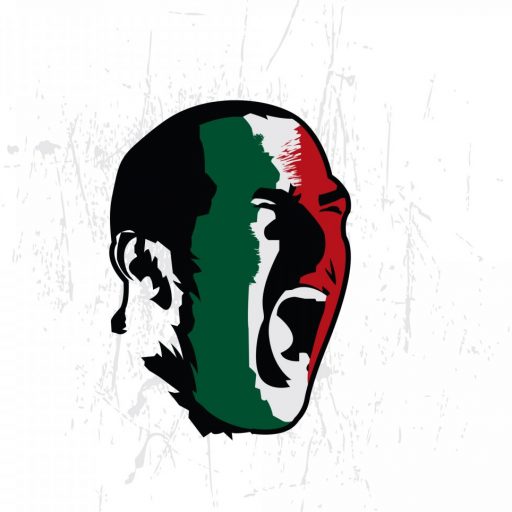Money can fix many things, but it won’t fix AC Milan

Fresh investment and the appointment of Sinisa Mihajlovic at AC Milan has brought back an air of expectation at the Stadio Meazza ahead of the new season. Mike Roberts asks if money can return the Rossoneri to the upper echelons of Serie A.
With AC Milan owner Silvio Berlusconi having sold almost half of the club’s shares to Thai buisness magnate Bee Taechaubol, also known as Mister Bee, the Rossoneri have spent big in the transfer market with the hope of rediscovering their greatness. But with Il Diavolo in limbo following their failure to qualify for Europe for the second straight year, can Mr Bee’s money restore the Rossoneri’s reputation?
“The Champions League is in our DNA.” The refrain synonymous with Milan’s vice president, Adriano Galliani, has become something of joke in recent years. Once upon a time it was hard to dispute his boast, as the Rossoneri won the European Cup five times in the previous three decades. But now the soundbite is more often used as an ironic jibe against the club by many a sneering critic.
The phrase is perhaps more suited to Barcelona or even Juventus, whose squads are filled with homegrown players bred for Europe’s premier football tournament. Milan’s DNA is still leaving it’s mark in the Champion’s League, but it is now scattered across Europe in the shape of former prospects reperesenting other clubs, while the Rossoneri squad has long been a Frankenstein’s monster comprised of leftovers and has-beens.
Galliani has offered many excuses for Milan’s failures. The financial state of Italian football is the acting CEO’s favourite alibi, but this doesn’t hold up under scrutiny when looking at some of the teams that finished ahead of the Rossoneri in the last two seasons: Lazio, Torino, Fiorentina, Sampdoria and Genoa can hardly claim to have more spending power than the Milanese giants. To find evidence that money isn’t the only key to success, the Rossoneri just have to look at their own past.
The glorious Milan sides of the late 1980s and 1990s won five Serie A titles and three European Cups under the guidance of Arrigo Sacchi and Fabio Capello. Built around a core consisting of Franco Baresi, Paolo Maldini, Alessandro Costacurta, Filippo Galli and Demetrio Albertini, they were undoubtedly one of the greatest teams of all time. Every one of these players came through the Rossoneri’s youth academy. While Berlusconi bought a magnificent supporting cast including Marco Van Basten, Ruud Gullit and George Weah, the continuous success of the club was upheld by the pillars of Baresi and Co.
But when this cycle came to an end, Milan lost their way. Rather than delve into the talent pool available to them, Berlusconi and Galliani turned their gaze from their Primavera youth team to the transfer market, and never looked back. Many potential stars were either overlooked or underrated.
Manchester United’s excellent new right-back Matteo Darmian had all the attributes to be crafted into the Rossoneri’s next great defender but was allowed to leave in 2010. In 2008/09, legendary full-backs Maldini, Gianluca Zambrotta and Giuseppe Favalli were all gracing the San Siro turf in their twilight years. Instead of having these players nurture and aid the development of the then eighteen-year-old, Darmian was rarely included in the first team, making only three Serie A appearances before his departure to Palermo.
Others have also slipped through the net. Pierre-Emerick Aubameyang became a prolific goalscorer in Ligue 1 and the Bundesliga for St Etienne and Borussia Dortmund respectively, after Milan released him in 2009.
Berlusconi and Galliani’s preference was for the declining Andriy Shevchenko to return to the San Siro on loan after a disappointing time with Chelsea. Stephan El Sharaawy is the latest prodigy to leave the Giuseppe Meazza, at the age of twenty-two, despite showing phenomenal talent before a series of injuries, while Riccardo Saponara’s promising form at Empoli foretells yet more Rossoneri regret. Worst of all, the list of players brought in at the expense of these youngsters includes Adel Taarabt, Cristina Zaccardo and Alessandro Matri – players that, predictably, failed to make the grade.
The Rossoneri faithful have long grown weary of the club’s panic buys and quick-fix solutions. Following the 2014/15 season, the Ultras wrote an open letter to Berlusconi demanding that he either changes the direction of the club, or leaves. Mister Bee’s purchase of a forty-eight per cent stake in the club has already resulted in an €80 million spending spree with Carlos Bacca, Luiz Adriano, Alessio Romagnoli and Andrea Bertolacci brought in to strenghthen the side, but this is merely a compromise.
Ultimately, Silvio Berlusconi remains the majority shareholder and is still at the helm, meaning that Milan are destined to repeat their mistakes. Big money transfers can make the team better in the short term but investing in youth development is the key to sustainable success. The Ultras and indeed all supporters of the red-and-blacks know this all too well, but their attempts to remind Berlusconi of his magic formula from the Baresi-Maldini era, have so far fallen on deaf ears.